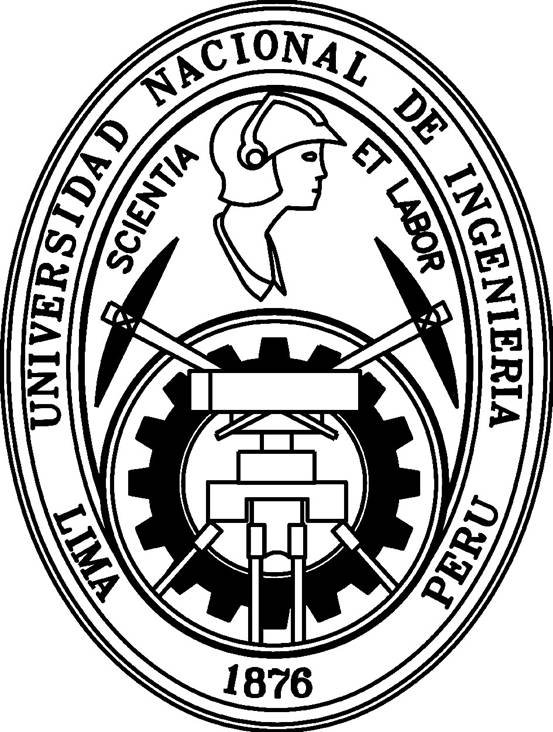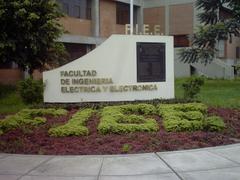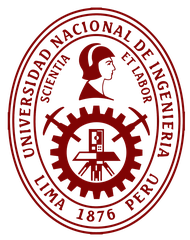
Visiting the National University of Engineering (UNI) in Lima, Peru: Comprehensive Guide to Tickets, Hours, and Visitor Tips
Date: 14/06/2025
Introduction
The National University of Engineering (Universidad Nacional de Ingeniería, UNI) in Lima, Peru, is a renowned institution celebrated for its academic rigor, cultural richness, and historical significance. Founded in 1876 by the visionary Polish engineer Eduardo de Habich, UNI was established to meet the urgent demand for highly trained professionals in mining and civil construction during Peru’s industrial boom. Over nearly 150 years, UNI has evolved into a multidisciplinary hub of innovation, research, and public service, consistently contributing to the nation’s development and technological progress.
Situated in Lima’s historic Rímac district, the UNI campus is not only a center of learning but also a destination for cultural exploration. Visitors can experience a vibrant academic community, admire modernist architecture, explore public artworks, and attend dynamic events. This guide provides essential information for planning a visit, including operating hours, ticketing, highlights, accessibility, and travel tips, ensuring a rewarding experience at one of Peru’s foremost universities. For up-to-date details, consult the UNI official website and EduRank.
Table of Contents
- Introduction
- Founding and Historical Development
- Institutional Growth and Academic Prestige
- Research, Innovation, and Social Impact
- Architectural and Cultural Highlights
- Visitor Information: Hours, Tickets, Tours, and Accessibility
- Getting to UNI Lima
- Campus Highlights and Photographic Spots
- Special Events and Cultural Activities
- Frequently Asked Questions (FAQ)
- Conclusion
- References and Further Reading
Founding and Historical Development
UNI began as the Escuela Especial de Construcciones Civiles y de Minas in 1876, founded to supply Peru with engineers capable of advancing its mining and infrastructure sectors (EduRank). Eduardo de Habich’s leadership and the adoption of European academic models established a strong scientific and technical foundation.
Throughout its early years, UNI focused on civil and mining engineering, directly supporting Peru’s modernization. In 1955, the institution was granted university status and adopted its current name, reflecting its expanded academic mission.
Institutional Growth and Academic Prestige
As Peru’s economy diversified, UNI expanded its curriculum to include mechanical, electrical, chemical, and industrial engineering. Today, it offers undergraduate and postgraduate programs across 11 faculties, including architecture, mathematics, and the sciences.
UNI is consistently ranked among the nation’s top engineering institutions, with a reputation for academic excellence, innovative research, and influential alumni (EduRank). The university maintains active ties with international academic networks and hosts exchange programs with leading institutions worldwide.
Research, Innovation, and Social Impact
UNI’s research centers are at the forefront of earthquake engineering, renewable energy, materials science, and information technology. The university’s expertise in seismic-resistant construction has been especially vital for Peru, a country prone to earthquakes. UNI collaborates with governmental agencies, private industry, and international organizations to address public challenges and drive technological advancement.
The university’s social outreach is evident in its disaster response initiatives, environmental projects, and community engagement programs, underscoring its commitment to national progress.
Architectural and Cultural Highlights
Campus Landmarks
- Rectorado (Rector’s Office): The administrative heart of UNI, housed in a striking modernist building.
- Central Library: Featuring extensive academic resources and tranquil study areas.
- Guido Del Castillo Coliseum: A state-of-the-art sports complex hosting athletic events and community activities.
Art and Heritage
- Murals and Sculptures: Public artworks by celebrated Peruvian artists such as Fernando de Szyszlo and José Sabogal.
- Historical Exhibits: Displays of early scientific instruments and pre-Hispanic ceramics.
- Faculty of Architecture, Urbanism, and Arts: Known for student exhibitions and creative installations.
Green and Recreational Spaces
UNI’s campus features gardens, green courtyards, and plazas ideal for relaxation and photography. Outdoor sports courts and cafeterias provide additional social and recreational opportunities.
Visitor Information: Hours, Tickets, Tours, and Accessibility
Visiting Hours
- Monday to Friday: 8:00 am – 6:00 pm
- Weekends/Holidays: By appointment or during special events (check ahead)
Entry and Tickets
- General Entry: Free of charge for public areas and most facilities
- Special Events/Exhibitions: May require advance registration or a nominal fee
- Guided Tours: Available by prior arrangement via the UNI website or administrative office; offered in Spanish and English
Accessibility
- Mobility: Ramps and elevators in main buildings; visitors with specific needs should contact the university before arrival
- Visitor Check-in: Valid identification required; sign-in at security checkpoints
Getting to UNI Lima
- Location: Av. Túpac Amaru 210, Rímac, Lima, Peru
- By Metro: Nearest station is Estación Central (approx. 15-minute walk)
- By Bus: Several city bus routes serve the Rímac district
- By Taxi/Rideshare: Readily available throughout Lima; parking on campus for visitors
Campus Highlights and Photographic Spots
- Central Plaza: The bustling center of student life, surrounded by landmark buildings
- Faculty Buildings: Showcasing diverse architectural styles
- Art Collections: Murals, sculptures, and permanent exhibitions
- Outdoor Spaces: Gardens and courtyards perfect for photos and relaxation
Special Events and Cultural Activities
UNI regularly hosts:
- Engineering Fairs
- Academic Conferences
- Public Seminars
- Cultural Festivals
These events are often open to the public and provide insight into UNI’s academic and community engagement. Check the official calendar for upcoming activities.
Frequently Asked Questions (FAQ)
Q: What are the UNI visiting hours?
A: Monday to Friday, 8:00 am – 6:00 pm; weekends by appointment or during special events.
Q: Is there an admission fee?
A: General entry is free. Some tours or exhibitions may require prior arrangement.
Q: Are guided tours available?
A: Yes, bookable through the administrative office or online; available in Spanish and English.
Q: Is the campus accessible for people with disabilities?
A: Yes; contact the university for specific needs.
Q: What are recommended nearby attractions?
A: Explore the Rímac district, including Parque La Muralla, Puente de Piedra, and Lima’s historic center.
Conclusion
Visiting the National University of Engineering (UNI) in Lima is a rewarding experience for anyone interested in Peru’s academic heritage, architectural landmarks, and dynamic campus culture. Whether you’re a prospective student, researcher, or cultural traveler, UNI offers a unique blend of tradition, innovation, and accessibility. Make the most of your visit by planning ahead, booking guided tours, and exploring both the campus and nearby historic sites. For current information, events, and tour bookings, visit the official UNI website or use the Audiala app for maps and updates.
References and Further Reading
- UNI Official Site
- EduRank: Best Universities for Engineering in Lima, Peru
- Academia Lab: National University of Engineering Peru
- Wikiwand: National University of Engineering
















































































































